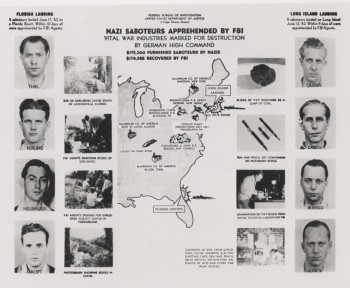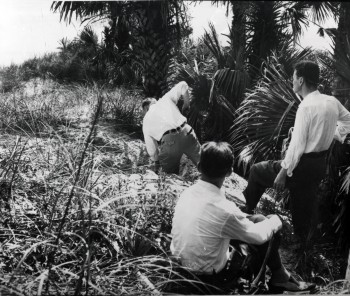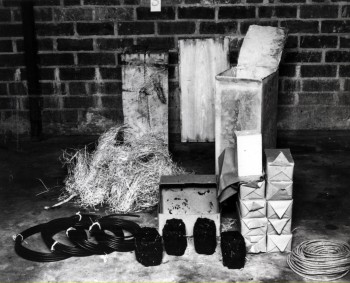Operation Pastorius
Under the cover of night, four Nazi spies departed from a submarine just off the coast of Florida. Upon landing, they concealed explosive materials and other items in the sand, and disappeared into the unsuspecting beachfront community with intentions of sabotaging American war efforts. While it may sound like another sensational and fictional World War II story from Hollywood, it happened during the late night hours of June 16, 1942 here on Ponte Vedra Beach.
Spies have long been utilized by opposing sides during wartime, and World War II was by no exception. Operations like these were already underway by the Nazis before the United States entered the war. After America declared war on Germany in December 1941 in the wake of Pearl Harbor, German interest in infiltrating the country increased greatly. By the summer of 1942, one such mission known as Operation Pastorius was already under way. The main objective of this mission was to create a crippling disruption of production of war materials in the United States; specifically aiming at aluminum and magnesium plants.

Armed with extensive training on sabotage, particularly in the creation and utilization of explosives, two groups of four men were sent to the Eastern coast of the United States. The first group, which landed in Long Island, NY, included George John Dasch, Ernest Peter Burger, Heinrich Harm Heinck and Richard Quirin; the second group, which landed in Ponte Vedra Beach, included Edward John Kerling, Werner Thiel, Hermann Otto Neubauer and Herbert Hans Haupt.
Ponte Vedra Beach was chosen as the site of the second landing as it was already known to the leader of that group, Kerling. In fact, all of these men had one very important factor in common: they had all lived for some time in the United States prior to this mission. They were chosen specifically for this reason since they were already familiar with American society and would be able to blend in easily among the crowds without arousing suspicion.
The second group arrived on the shores of Ponte Vedra Beach by submarine, also known as a U-boat, during the late night hours of June 16. The four spies were brought ashore in collapsible rubber boats, which were then rowed back to the submarine. Now left to their own devises, the four quickly hid their explosives and money in the sand among the palm trees and left with the intention of returning for these items within a few days.

At left, FBI agents dig in the dunes near the saboteur’s landing site in Ponte Vedra Beach. Below, raw materials for making bombs discovered by the agents.

However, they did not count on being discovered before their return. Within a few days of landing at Long Beach, members of the group in New York were arrested and the plot was soon revealed. Though they had already left the state of Florida, the other spies were quickly captured and newspapers across the nation were soon filled with the trial regarding the fate of the spies. The trial concluded with death sentences for six of the saboteurs except for Dasch and Burger, who agreed to provide information in exchange for lesser sentences. Burger was given a life sentence in prison while Dasch received 30 years. He later went on to write a book about the story entitled Eight Spies Against America in 1959.
After the news was spread, beachfront security in the Beaches area was tightened, particularly in the strip of land where the saboteurs had landed. This incident and the sinking of the SS Gulfamerica oil tanker ensured a ban on lights along the shore front throughout the rest of the war.



